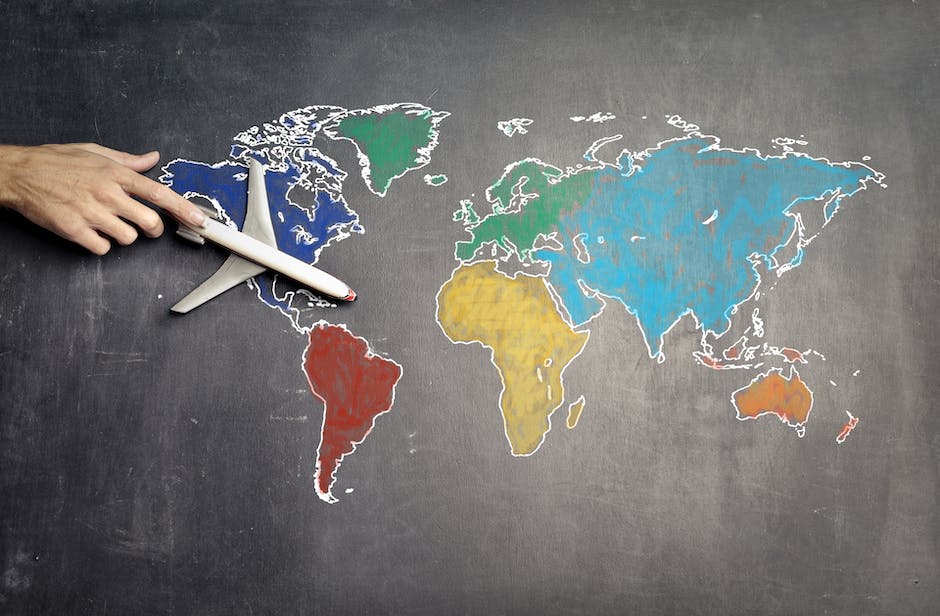Table of Contents
“Embrace diversity, foster understanding, and thrive in a globalized world with cultural competence.”
Introduction
Cultural competence refers to the ability to effectively interact and communicate with individuals from diverse cultural backgrounds. In today’s globalized world, where people from different cultures come together more frequently, it is crucial for students to develop cultural competence skills. This involves understanding and appreciating cultural differences, being aware of one’s own cultural biases, and being able to adapt and navigate in multicultural environments. By preparing students with cultural competence, they are better equipped to succeed in a globalized society and contribute positively to an increasingly interconnected world.
The Importance of Cultural Competence in Education

Cultural Competence: Preparing Students for a Globalized World
In today’s increasingly interconnected world, cultural competence has become a crucial skill for students to develop. As societies become more diverse and globalized, it is essential for individuals to understand and appreciate different cultures. This is particularly important in the field of education, where teachers play a vital role in shaping the minds of future generations.
Cultural competence refers to the ability to interact effectively with people from different cultural backgrounds. It involves understanding and respecting the values, beliefs, and practices of others, as well as recognizing and challenging one’s own biases. By promoting cultural competence in education, we can create inclusive learning environments that foster understanding, empathy, and respect among students.
One of the key reasons why cultural competence is important in education is that it helps students develop a global perspective. In today’s interconnected world, it is no longer enough to have knowledge of one’s own culture. Students need to be able to navigate and thrive in diverse cultural contexts. By exposing students to different cultures and perspectives, we can broaden their horizons and help them develop a more nuanced understanding of the world.
Cultural competence also plays a crucial role in promoting social justice and equity in education. Students from diverse backgrounds often face unique challenges and barriers to success. By understanding and addressing these challenges, educators can create a more inclusive and equitable learning environment. Cultural competence allows teachers to tailor their instruction to meet the needs of all students, regardless of their cultural background.
Furthermore, cultural competence in education helps to break down stereotypes and prejudices. By promoting understanding and empathy, teachers can challenge stereotypes and biases that students may hold. This is particularly important in a world where discrimination and prejudice still exist. By fostering a culture of respect and acceptance, educators can help create a more inclusive society.
In addition to promoting understanding and empathy, cultural competence also enhances communication skills. Effective communication is essential in today’s globalized world, where individuals from different cultural backgrounds often need to work together. By understanding the cultural nuances of communication, students can become more effective communicators and collaborators.
Moreover, cultural competence in education prepares students for the workforce. In an increasingly globalized economy, employers value employees who can work effectively with people from different cultural backgrounds. By developing cultural competence, students gain a competitive edge in the job market and increase their chances of success in their careers.
To promote cultural competence in education, it is important for schools and educators to provide opportunities for students to engage with different cultures. This can be done through multicultural curricula, cultural exchange programs, and community partnerships. It is also crucial for educators to receive training and professional development in cultural competence, so they can effectively teach and support students from diverse backgrounds.
In conclusion, cultural competence is a vital skill for students to develop in today’s globalized world. By promoting cultural competence in education, we can create inclusive learning environments that foster understanding, empathy, and respect among students. Cultural competence not only prepares students for a globalized workforce but also promotes social justice, breaks down stereotypes, enhances communication skills, and broadens students’ perspectives. It is essential for schools and educators to prioritize cultural competence and provide opportunities for students to engage with different cultures.
Strategies for Developing Cultural Competence in Students
Cultural Competence: Preparing Students for a Globalized World
Strategies for Developing Cultural Competence in Students
In today’s globalized world, it is essential for students to develop cultural competence. Cultural competence refers to the ability to understand, appreciate, and interact effectively with people from different cultures. It is a crucial skill that enables individuals to navigate diverse environments and build meaningful relationships with people from various backgrounds.
One strategy for developing cultural competence in students is through exposure to diverse cultures. Schools can organize cultural exchange programs, where students have the opportunity to interact with peers from different countries. These programs allow students to learn about different customs, traditions, and perspectives firsthand. By immersing themselves in a different culture, students can develop empathy and a deeper understanding of the world around them.
Another effective strategy is incorporating multicultural literature into the curriculum. By reading books written by authors from different cultures, students can gain insights into the experiences and perspectives of people from diverse backgrounds. This exposure to different narratives helps students develop empathy and a broader worldview. It also encourages critical thinking and challenges stereotypes, fostering a more inclusive and accepting society.
Furthermore, educators can promote cultural competence by integrating cultural activities into the classroom. For example, teachers can organize cultural festivals where students showcase their heritage through music, dance, and food. These activities not only celebrate diversity but also provide opportunities for students to learn from one another. By actively participating in cultural activities, students can develop a sense of pride in their own culture while appreciating and respecting others.
In addition to exposure and activities, it is crucial to teach students about cultural differences and similarities. Educators can incorporate lessons on cultural diversity into the curriculum, discussing topics such as language, religion, and social customs. By providing students with knowledge about different cultures, they can develop a foundation for understanding and appreciating diversity. This knowledge also helps students navigate cross-cultural interactions with respect and sensitivity.
Moreover, fostering open and inclusive classroom discussions is essential for developing cultural competence. Teachers can create a safe space where students feel comfortable sharing their perspectives and experiences. By encouraging dialogue and active listening, students can learn from one another and gain a deeper understanding of different cultures. These discussions also promote critical thinking and challenge biases, enabling students to become more culturally competent individuals.
Lastly, it is crucial for schools to provide professional development opportunities for educators to enhance their own cultural competence. Teachers play a vital role in shaping students’ attitudes and beliefs, and their own cultural competence is essential in creating an inclusive learning environment. Professional development programs can provide educators with the knowledge and skills necessary to effectively teach cultural competence and address diversity-related issues in the classroom.
In conclusion, developing cultural competence in students is crucial for preparing them for a globalized world. Strategies such as exposure to diverse cultures, incorporating multicultural literature, organizing cultural activities, teaching about cultural differences, fostering inclusive discussions, and providing professional development opportunities for educators can all contribute to the development of cultural competence in students. By equipping students with this essential skill, we can create a more inclusive and accepting society that values diversity and promotes meaningful cross-cultural interactions.
Promoting Cultural Awareness and Sensitivity in the Classroom
Cultural Competence: Preparing Students for a Globalized World
In today’s increasingly interconnected world, it is essential for students to develop cultural competence. Cultural competence refers to the ability to understand, appreciate, and interact effectively with people from different cultures. This skill is crucial as it enables individuals to navigate diverse social and professional environments, fostering mutual understanding and collaboration. To promote cultural awareness and sensitivity in the classroom, educators must employ various strategies and create a supportive learning environment.
One effective way to promote cultural awareness is through the inclusion of diverse perspectives in the curriculum. By incorporating literature, history, and art from different cultures, students gain exposure to a wide range of experiences and worldviews. This exposure helps them develop empathy and understanding for people from different backgrounds. Additionally, educators can invite guest speakers from different cultures to share their experiences and insights, providing students with firsthand accounts of diverse perspectives.
Another important aspect of promoting cultural sensitivity is fostering an inclusive classroom environment. Educators should create a safe space where students feel comfortable expressing their opinions and asking questions about different cultures. This can be achieved by establishing ground rules for respectful dialogue and encouraging open-mindedness. By valuing and respecting each student’s unique background, educators can create an environment that celebrates diversity and encourages cross-cultural interactions.
Furthermore, educators should actively engage students in discussions and activities that challenge stereotypes and biases. By critically examining cultural stereotypes, students can develop a more nuanced understanding of different cultures and avoid making assumptions based on limited information. This can be done through group discussions, role-playing exercises, and analyzing media representations of different cultures. By encouraging students to question their own biases and preconceptions, educators can help them develop a more open and inclusive mindset.
In addition to classroom activities, educators should also provide opportunities for students to engage with diverse communities outside of the classroom. Field trips to cultural events, museums, and community organizations can expose students to different cultural practices and traditions. By immersing themselves in these experiences, students can gain a deeper appreciation for the richness and diversity of the world around them. Furthermore, educators can encourage students to participate in community service projects that involve working with diverse populations. These experiences not only promote cultural competence but also foster empathy and a sense of social responsibility.
To ensure the effectiveness of these strategies, it is important for educators to continuously reflect on their own cultural biases and seek professional development opportunities. By examining their own beliefs and assumptions, educators can better understand how these may influence their teaching practices. Professional development workshops and courses on cultural competence can provide educators with the necessary knowledge and skills to create inclusive learning environments. Additionally, educators should actively seek feedback from students and colleagues to assess the impact of their efforts and make necessary adjustments.
In conclusion, promoting cultural awareness and sensitivity in the classroom is crucial for preparing students for a globalized world. By incorporating diverse perspectives in the curriculum, fostering an inclusive classroom environment, challenging stereotypes, and providing opportunities for engagement with diverse communities, educators can help students develop cultural competence. This skill is essential for students to navigate diverse social and professional environments, fostering mutual understanding and collaboration. By continuously reflecting on their own biases and seeking professional development, educators can ensure the effectiveness of their efforts in preparing students for a globalized world.
Integrating Cultural Competence into the Curriculum
Cultural Competence: Preparing Students for a Globalized World
In today’s increasingly interconnected world, it is essential for students to develop cultural competence. Cultural competence refers to the ability to understand, appreciate, and interact effectively with people from different cultures. It involves being aware of one’s own cultural biases and being able to adapt to diverse cultural norms and practices. By integrating cultural competence into the curriculum, educators can help students develop the skills they need to thrive in a globalized society.
One way to integrate cultural competence into the curriculum is by incorporating diverse perspectives and experiences into the content that is taught. This can be done by including literature, history, and social studies materials that represent a wide range of cultures and perspectives. By exposing students to different cultural narratives, they can develop a more nuanced understanding of the world and the people who inhabit it.
Another important aspect of integrating cultural competence into the curriculum is providing opportunities for students to engage in cross-cultural interactions. This can be done through activities such as group projects, discussions, and field trips that expose students to different cultures and allow them to interact with people from diverse backgrounds. By engaging in these types of activities, students can develop empathy, communication skills, and a greater appreciation for cultural diversity.
In addition to incorporating diverse perspectives and providing opportunities for cross-cultural interactions, it is also important to teach students about the concept of cultural relativism. Cultural relativism is the idea that all cultures have their own unique values, beliefs, and practices, and that these should be understood and respected within their own cultural context. By teaching students about cultural relativism, educators can help them develop a more open-minded and accepting attitude towards cultural differences.
Furthermore, integrating cultural competence into the curriculum can also involve teaching students about the impact of globalization on culture. Globalization has led to increased interconnectedness and cultural exchange, but it has also resulted in the erosion of traditional cultural practices and the homogenization of certain aspects of culture. By teaching students about the complexities of globalization, educators can help them understand the challenges and opportunities that come with living in a globalized world.
Lastly, it is important to assess students’ cultural competence and provide feedback on their progress. This can be done through assignments, projects, and assessments that require students to demonstrate their understanding of different cultures and their ability to interact effectively with people from diverse backgrounds. By providing feedback and guidance, educators can help students develop their cultural competence skills and continue to grow in their understanding of cultural diversity.
In conclusion, integrating cultural competence into the curriculum is essential for preparing students for a globalized world. By incorporating diverse perspectives, providing opportunities for cross-cultural interactions, teaching about cultural relativism and the impact of globalization, and assessing students’ progress, educators can help students develop the skills they need to thrive in an increasingly interconnected and diverse society. By fostering cultural competence, educators are not only preparing students for success in their personal and professional lives, but also contributing to a more inclusive and understanding world.
Q&A
1. What is cultural competence?
Cultural competence refers to the ability to understand, appreciate, and interact effectively with people from different cultures.
2. Why is cultural competence important?
Cultural competence is important because it promotes respect, understanding, and inclusivity among individuals from diverse backgrounds. It helps to bridge cultural gaps, reduce stereotypes, and enhance communication and collaboration in a globalized world.
3. How can cultural competence be developed in students?
Cultural competence can be developed in students through education and exposure to diverse cultures, languages, and traditions. It involves teaching cultural awareness, empathy, and communication skills, as well as providing opportunities for cross-cultural experiences and interactions.
4. What are the benefits of cultural competence for students?
Developing cultural competence in students can lead to numerous benefits, including increased tolerance, open-mindedness, and acceptance of diversity. It also enhances critical thinking, problem-solving, and adaptability skills, which are essential in a globalized world. Additionally, cultural competence can improve students’ ability to work effectively in multicultural teams and navigate different cultural contexts.
Conclusion
Cultural competence is essential in preparing students for a globalized world. It involves understanding and appreciating different cultures, beliefs, and values, as well as developing effective communication and collaboration skills across cultural boundaries. By promoting cultural competence, educational institutions can equip students with the necessary knowledge and skills to navigate diverse environments, foster inclusivity, and contribute positively to a global society.





